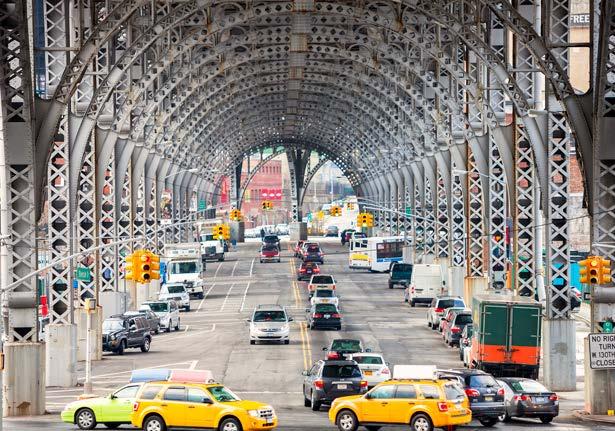
4 minute read
EXECUTIVE SUMMARY
In recent years, policymakers have increasingly recognized the impact of the social and physical environment on health outcomes and inequities. There is a growing body of evidence showing how people’s unmet socioeconomic needs negatively impact health and are often prioritized over preventive healthcare and other positive health behaviors. Despite this awareness, people’s typical encounters with the health care system do not identify and address these health-related social needs. Further, government payment mechanisms in healthcare, human services, and public health have been slow to invest in the necessary infrastructure, innovation, and non-medical services needed to effectively address unmet needs and integrate healthcare and community resources at scale. As a result, health equity struggles to advance.
In NYC, this struggle is evident in the following statistics:
Advertisement
• An eleven-year difference in life expectancy between the Upper East Side, Manhattan and
Brownsville, Brooklyn • An avoidable hospitalization rate in the lowest-income neighborhoods that is two to three times higher than that of NYC overall • Significant and persistent racial and ethnic disparities in incidence, morbidity, and mortality across many diseases and conditions, including COVID-19
In New York, the Delivery System Reform Incentive Payment (DSRIP) program, a major Medicaid reform effort undertaken from 2014-2019, achieved some improvement in healthcare utilization and costs through crucial reforms to healthcare service delivery. However, the effort revealed that further gains would depend on addressing people’s social and environmental conditions beyond the clinical setting. Addressing these conditions in the next phase of Medicaid reform will require improving the policies and practices that support integrating community-based services along the healthcare continuum and building and sustaining successful healthcare-community partnerships.
COVID-19 also revealed hard truths about the impact of structural racism and health disparities in NYC. Just as COVID-19 disrupted how individuals led their daily lives, many healthcare and community-based organizations’ (CBOs) ways of providing services were disrupted, requiring rapid transformation. At the same time, the pandemic created tremendous new demands for the resources these organizations offer, such as food and nutrition services, benefits, and housing and cash assistance, resources critical to keeping New Yorkers healthy in their homes and communities. During the first wave of the pandemic, there were limited trustworthy means of connecting people to services, particularly across sectors. To address this challenge, in April 2020, PHS and our healthcare and community-based organization partners, together with the technology company Unite Us, launched a new citywide technology-enabled Community Resource Network (CRN). As of January 2022, over 280 organizations have joined the network offering over 560 service programs.
PHS’s experience in building and managing CRNs to respond to community needs started in 2014 with a coordinated intake for pregnant and parenting families and expanded in 2018 to address food insecurity through our Food and Nutrition Services Bundle and in 2020 to include additional populations including low-income immigrant families, seniors, and people living with chronic conditions.
Our goal in developing CRNs is to create reliable connections between healthcare and community
2014 - PRESENT 2018 - PRESENT 2020 - PRESENT
PREGNANT AND NEWLY PARENTING FAMILIES HOUSEHOLDS EXPERIENCING FOOD INSECURITY SENIORS AND PEOPLE LIVING WITH CHRONIC CONDITIONS
Timeline of PHS Experience Developing Community Resource Networks in NYC
partners so that people receive the right resources, in the right place, at the right time with a commitment to health equity for all New Yorkers.
To have a meaningful impact on health equity, NYC
needs a single city-wide CRN infrastructure that
supports all residents. To inform the development of a city-wide CRN infrastructure, PHS convened a multi-session symposium series to compile key learnings from previous healthcare reform efforts and pragmatic solutions from stakeholders across CBO, healthcare, government, and technology sectors. Through the series, we arrived at the following conclusions:
• The people we aim to serve must be meaningfully included in CRN development, implementation and evaluation from the
beginning. With the appropriate funding and an equitable level of community voice, community members and CBOs will be a critical element of New York’s long term public health infrastructure that ensures all people’s needs are met.
• Significant investment is needed in evidencebased community services to sufficiently scale to move the needle on population health
outcomes and health equity. The infrastructure must be flexible enough to accommodate multiple use cases and funding streams beyond healthcare’s value-based payment methodologies.
• A strong administrative backbone is needed to support critical capacities of network members, such as deploying innovative technology, establishing effective contracts and standard business practices, and ensuring
quality and equity of outcomes. The nonspecific contracting requirements established during New York’s previous efforts at healthcare reform must be rethought to achieve meaningful progress towards health equity at scale.
• Health systems and managed care organizations (MCOs) have an essential role to play in identifying populations in need of support, participating in an effective CRN,
and purchasing needed services. However, the system must be built to ensure access to essential services such as food, housing, or transportation is not dependent on membership to a specific healthcare provider or plan. To ensure this, CRN infrastructure should be connected to, but independent from, the healthcare system.
This Roadmap to Health Equity serves as an informed and practical guide with a set of recommendations that sets forth a pathway to continue building this infrastructure. It was developed in collaboration with cross-sector representatives working on the ground in NYC communities, in healthcare, government and technology settings, through our year and a half long Symposium Series Integrating Human Services and Clinical Services with People at the Center. The Series included two sessions to identify key challenges and discuss best-practice models, four small-group “expert sessions” with an objective to determine practical applications for the roadmap, and a final session to outline the specific roles each sector will play in the roadmap’s implementation. We hope that you find this to be a useful resource and join us in making this vision come to fruition for NYC in the coming years.



